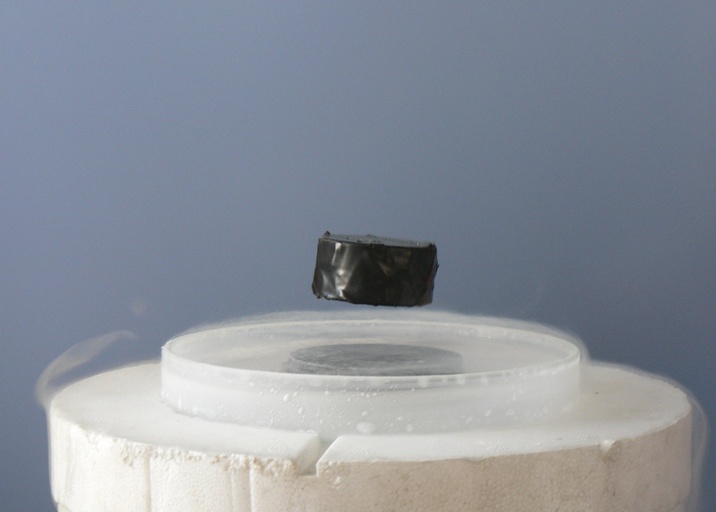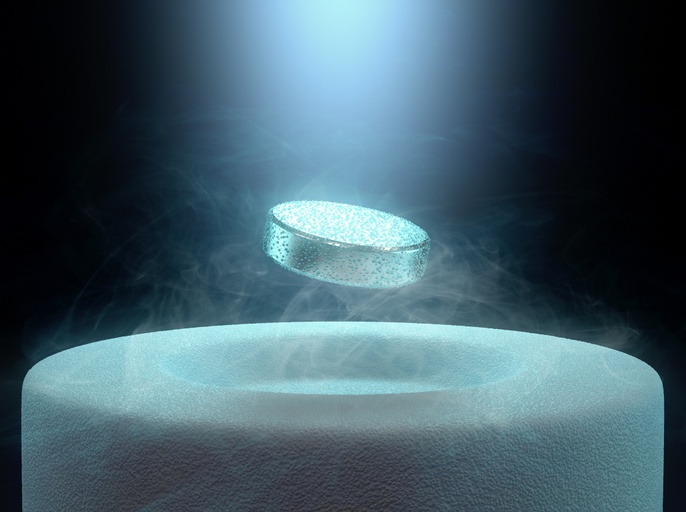Superior high temperature superconductors capable of higher currents thanks to larger crystals. Hypothetical dream for the future about maybe being able to make room-temperature superconductors only in microgravity.
Updated: 2024-02-24
Created: 2018-11-01
Status
Basic principles have been discussed and large grain superconductors have been grown in space in 2004, but research seems to have slowed down.
Applications
- Generate very strong magnetic fields.
- Quantum computers.
- Superconducting computers.
- Electricity transmission.
- …
Why & Solution
High-temperature superconductors are not able to sustain very high currents, which limits their applications and is one of the blockers to be able to switch from expensive liquid helium cooling to liquid nitrogen cooling.
The maximum critical current achievable in high-Tc wires and tapes is well known to be limited by the presence of grain boundaries, regions of mismatch between crystallites with misoriented crystalline axes.2
The lack of a proper crucible material, the tetragonal/orthotrombic phase transformation twinning, and the necessity of oxygen loading make it difficult to grow a perfect monocrystal. The present most favorable growing process is a quasi crucible free method. Working under microgravity is shown to be of interest when growing high temperature superconductor crystals. In such conditions greater melts can be floated without crucible material through an ultrasonic field. Perfect monocrystals can be obtained by a slow cooling.1
The experiment to fabricate large-grain RE–Ba–Cu–O (RE: Rare-Earth element) bulk superconductors in microgravity environment was in the Unmanned Space Experiment Recovery System project. It is difficult to grow high-quality large-grain superconductors on the ground due to the chemical contamination from the substrate and the segregation of liquid phase. Such problems can be overcome by growing large RE–Ba–Cu–O bulk in microgravity environment, in which the bulk can be supported by a seed crystal alone during the crystal growth.3
Unmanned space experiments were performed with the aim of growing large grain Gd–Ba–Cu–O superconductors in space. The advantage of the space experiment was the support of a large precursor block by a small seed crystal alone. Three samples were safely returned from space.
Considerable effort has been concentrated on the synthesis and characterization of high Tc oxide superconducting materials. The YBaCuO system has received the most intense study, as this material has shown promise for the application of both thin film and bulk materials. There are many problems with the application of bulk materials; weak links, poor connectivity, small coherence length, oxygen content and control, environmental reactivity, phase stability, incongruent melting behavior, grain boundary contamination, brittle mechanical behavior, and flux creep. The extent to which these problems are intrinsic or associated with processing is the subject of controversy. This study seeks to understand solidification processing of these materials, and to use this knowledge for alternative processing strategies, which, at the very least, will improve the understanding of bulk material properties and deficiencies.Containerless melt processing has proven to be a novel technique for gaining valuable information about the phase relationships in oxide superconductor systems. In particular, the techniques put forth in this study allowed for obtaining information unavailable using conventional processing methods due to the avoidance of any container contamination effects.5
Earthly Solution Risk
Exists, but solving the problem is much more important because of the benefits it would provide.

